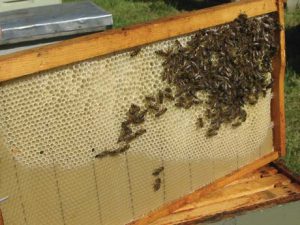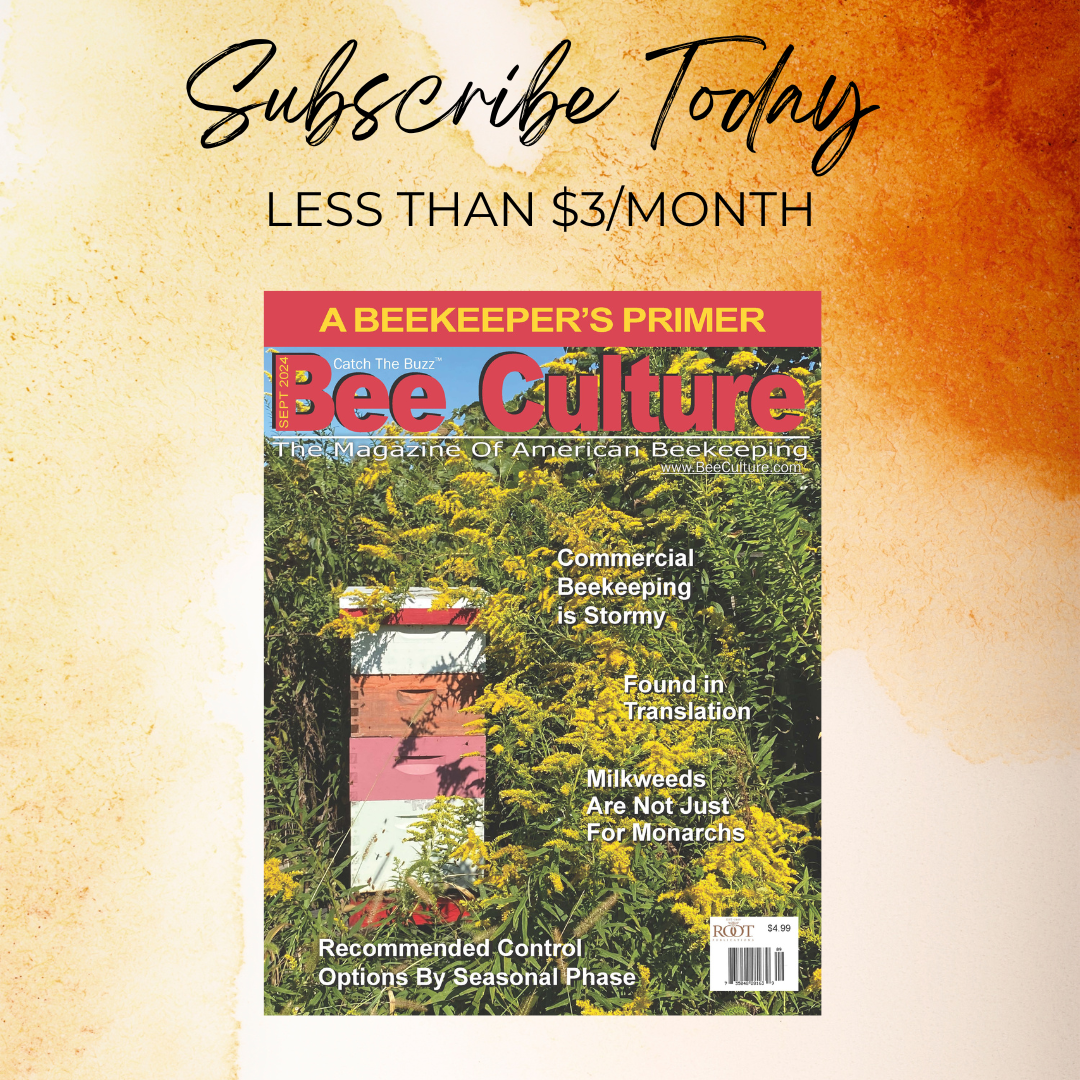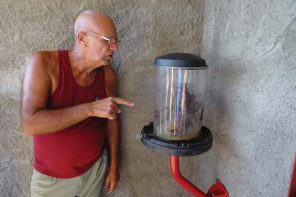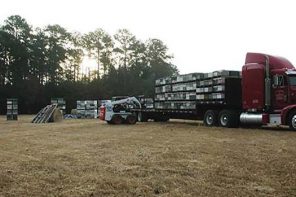BetterComb and the Demise of 100% Beeswax
By: Ross Conrad
A recently adopted innovation in beekeeping is the use of completely drawn out honey comb made of synthetic wax. Modern beekeepers have long used Perma Comb, a fully drawn out plastic comb, in hives but this is the first time wax combs other than beeswax have been commercially available for use in hives.
Marketed under the dubious name of BetterComb, it is produced by Hexacells in Hungary for the beekeeping supply company Betterbee, of Greenwich, NY. The product is made from food grade or pharmaceutical grade nontoxic materials many of which are the same fatty acid monoesters, dieesters and trimesters, Hydrocarbons, Fatty acids, etc, found in beeswax. Unlike beeswax however, Bettercomb does not have the sweet smell of beeswax. In fact, it does not seem to have much of a smell at all.
Benefits of the ready made combs of synthetic wax include being able to introduce drawn comb into a hive immediately for faster package and nuc build up. It is also reported that wax moths are not attracted to the synthetic combs until the combs are used by the bees. Company officials also claim that the synthetic combs are pesticide free, a claim that beeswax foundation makers are unable to make due to the ubiquitous contamination of our environment by the “economic poisons” known as pesticides. As one would expect, Bettercomb is approved for food contact by the U.S. Food and Drug Administration so honey meant for human consumption can be harvested from synthetic wax combs without concern about contamination issues.

Ross Conrad
While the comb made from synthetic wax is very similar to its 100 percent beeswax counterpart, it is not beeswax. Researchers have yet to be able to identify all the constituents that make up real beeswax, making it impossible to accurately duplicate this amazing substance that honey bees produce in a laboratory. Only bees are able to produce beeswax. This difference is highlighted by the company recommendation that when mixing Bettercomb frames with normal beeswax frames of comb, alternating the frames is not recommended. It appears that when given a choice the bees will choose pure beeswax comb over the synthetic version every time. The bees will only use combs made of synthetic wax if they are provided no choice in the matter. This makes one wonder: what do the bees know that we don’t?
Of course developers and marketers of new innovations are known to promote and even exaggerate the benefits of their inventions while downplaying their shortcomings. For example, Betterbee is quick to point out that candles made from a mixture of pure beeswax and synthetic wax appear to burn the same as regular beeswax candles. I say appear to burn the same, since it is well established that pure beeswax candles burn significantly longer than candles made from paraffin wax. So far as I can tell, no-one has tested the burn time of pure beeswax candles compared to candles made from a mixture of beeswax and synthetic wax. So what are the other possible downsides of synthetic comb aside from the fact that the bees, the beings that the Bettercomb product is made for, don’t like it?
One problem with the new combs is that they are fragile and are not recommended for use in hot climates or for extracting honey unless extra time and expense is spent on wiring the comb into the frame.
Another issue is that extensive use of synthetic comb will greatly reduce the amount of wax that the bees need to produce themselves. From a strictly human perspective this can be considered a benefit. When combs made from synthetic wax are used less honey is consumed by the bees in producing their wax combs so there will be more honey for the beekeeper to harvest. Estimates are that bees must consume somewhere between six to eight pounds of honey to produce one pound of beeswax. Considering the number of combs in the standard hive this can amount to over 50 pounds of honey: a significant investment by both the bees and the beekeeper. However focusing solely on the amount of honey sacrificed to produce comb, ignores the fact that honey bees have a physiological need to produce beeswax. When researchers placed a package of commercially purchased bees in a hive and prevented the bees from foraging and fed the bees a steady diet of sugar syrup, the resulting beeswax combs were found to contain the typical miticide residues found in commercial beeswax. Since the bees were not allowed to forage freely and no pesticides were used in the hive, how did the chemicals get there? Since fluvalinate and coumophos are not used in the production of sugar cane or sugar beets, the only explanation is that the bees themselves had picked up the pesticides from the hives they were originally raised in before being packaged and sold. Just as perspiration is a way for people to remove toxins from their system, it appears that through the process of sweating out wax to build comb, bees are able to detoxify their systems. The well meaning beekeeper that is trying to reduce the pesticide load in their hives by using “pure” combs of synthetic wax, may actually be making it more difficult for the bees in their hives to lessen the pesticide contamination within their bodies. While we know from numerous studies that pesticide residues in beeswax is not conducive to a healthy hive, I am not aware of any research that has looked into whether the presence of pesticide residues in the hive is less harmful when it is in the beeswax or when it is in the bodies of the bees themselves. I would bet that it is worse for the bees to have the toxins in their bodies than in their wax.

Rather than allow bees to build comb during a nectar flow, or by creating an artificial nectar flow by feeding syrup, beekeepers can now order fully drawn out comb developed in a laboratory using synthetic wax. What could possibly go wrong with this plan?”
An even bigger issue with these new wax combs is that wax from synthetic combs are inevitably going to be mixed with the wax from normal beeswax combs. This will eventually lead to the contamination of all commercial beeswax with synthetic wax. Sure some beekeepers may initially try to segregate the synthetic wax combs from the beeswax combs, which means marking and keeping track of all frames and rendering them separately, but not all beekeepers are going to do this and inevitably the waxes will get mixed together especially in operations that purchase large amounts of beeswax from numerous sources. It was bad enough when we learned that all commercial beeswax has become contaminated with pesticide residues, mostly from the use by beekeepers trying to control varroa mites. As more and more beekeepers start to use the new synthetic comb the commercial beeswax available on the market will become more and more contaminated with synthetic wax from the old combs that get rendered. Perhaps Hexacells and Betterbee, since the beekeeping industry has grown accustomed to the idea of all beeswax being contaminated with pesticides, will not worry about adding synthetic wax to the mix. While this may be true for some, there will be beekeepers who will want to prevent the contamination of the wax used within and produced by their operation. These beekeepers will have a hard time finding commercial beeswax foundation that has not been contaminated with synthetic wax and thus will end up having to make their own foundation (a daunting task – see the April 2019 issue of Bee Culture), simply using strips of wood to encourage the building of comb within frames, or using plastic foundation or permacomb. The latter will result in more plastic being used and eventually disposed of by beekeepers wishing to avoid having synthetic wax mingled in with their beeswax. This trend toward more plastic will be terribly unfortunate given that as a society we need to be moving away from products produced by fossil fuels (most plastics are made from petroleum) and eliminating the production and release of the highly toxic chemicals that are part and parcel of plastic manufacturing.
In the end the only way that I as a beekeeper can protect the integrity of the beeswax produced by my operation is to isolate my apiaries by not bringing in combs from other operations (such as in nucleus colonies) and stop using wax foundation. I will also have to render all my wax myself, or try to find someone to do so for me and guarantee that the are able to segregate my wax from others. Otherwise I will no longer be able to claim that my beeswax or beeswax products contains only 100 percent beeswax. The contamination of beeswax with synthetic wax will be especially important for operations that produce value added products from their beeswax. Undoubtedly there will be labeling issues since those who have used beeswax in their products in the past will now will have to spend time and money changing their labels so they are accurate, though inevitably there will be beekeepers with lower moral standards that won’t bother correcting their product labels and instead rely on consumers who are not informed and aware that the “pure” beeswax in the products they buy is no longer actually pure beeswax. We do not yet know how the introduction of synthetic wax into the commercial beeswax stream will impact folks who make salves, balms and other cosmetics containing beeswax and if it will change the characteristics of the final product. Nor can we predict how much of the beeswax market will be lost to other competing waxes, such as Carnauba Wax, that have not been contaminated with a synthetic copycat and what this will do to the price of beeswax.
Since synthetic wax is made up of many of the same components found in beeswax, it will be extremely hard if not impossible to test beeswax samples to determine if they contain synthetic wax. Hexacells could have chosen to add a non-toxic benign ingredient that is easy to detect to its synthetic wax so that testing and preserving the integrity of 100 percent beeswax could be a possibility and purity proven, but so far they have chosen not to do so. We beekeepers already have a huge problem dealing with the purity of honey and now we can add to our woes the purity of beeswax. In the end only a few industries will profit from the sale of synthetic wax combs while bees, beekeepers, those who produce value added products from beeswax, and their unsuspecting customers will all pay the price.
Ross Conrad is the author of Natural Beekeeping and The Land of Milk and Honey.






